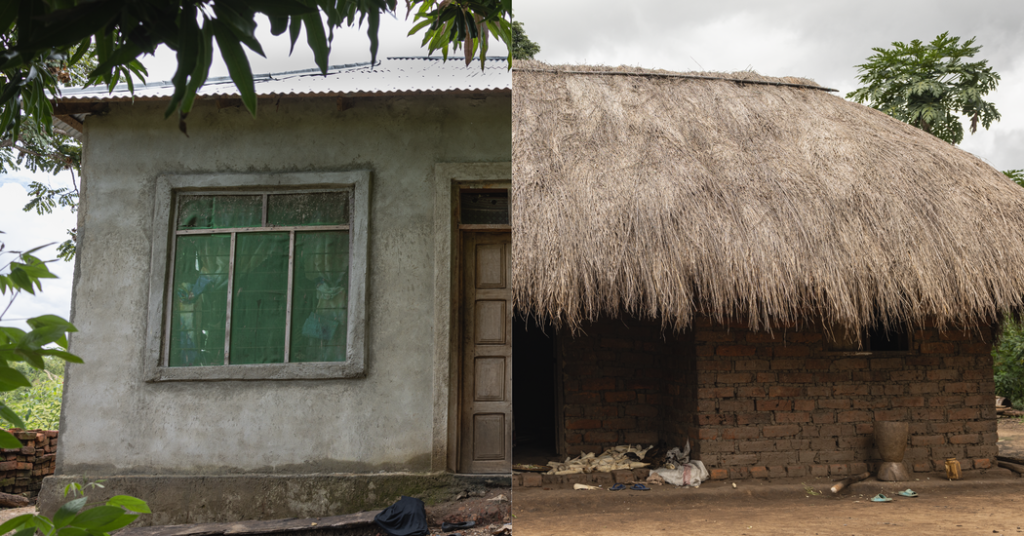A minimum of the world spends $22 billion yearly to kill mosquitoes that unfold malaria, dengue and different devastating illnesses.
That cash may purchase billions of gallons of pesticides, hundreds of thousands of kilos of larvicides and 75 million insecticide-treated mosquito nets. Yearly, tons of of hundreds of thousands extra {dollars} are poured into analysis into new methods to kill mosquitoes.
However simply as shortly as people give you new methods to regulate them, the bugs are growing methods to withstand.
What if we left the mosquitoes alone? What if we as a substitute centered on fixing the issues that make individuals weak to being bitten?
The realm across the metropolis of Ifakara has one of many highest malaria charges on the planet. The Ifakara Well being Institute, a tropical illness analysis heart, has been researching methods to fight the illness for greater than half a century. Some scientists there consider that straightforward, comparatively cheap modifications to individuals’s properties may make an enormous distinction in stopping malaria and different mosquito-borne illnesses that sicken hundreds of thousands of individuals annually.
That distinction is illustrated by two homes about 200 meters aside within the village of Chikuti, about 48 kilometers south of Ifakara.
One, on the high of a small hill, is house to the Kalalu household. Joram Kalalu, 54, and his spouse Malisa Uchaweli dwell there with their 13-year-old daughter Omega. They’re farmers, and Mr. Kalalu additionally has a part-time job driving a bus into city, which pays the equal of $85 a month.
The opposite home, simply down the hill and throughout the primary street, is owned by the Mtwaki household: Faustina Mtwaki, 37, her husband, Matias Benjamin, and their seven kids. They’re additionally farmers, and Ms. Mtwaki makes a type of beer from dried corn that she sells within the neighborhood, incomes $65 a month.
Malaria is taking an enormous toll on the Mtwaki household. The youngsters develop the attribute excessive fever and pounding complications each two or three months, and Mrs Mtwaki has to place work apart to take care of them. Journeys to the clinic for diagnoses and capsules to kill the parasite eat a big a part of the household earnings.
However Mr. Kalalu and his household now hardly ever get malaria. This 12 months, their solely combat occurred after Mr Kalalu was badly bitten by mosquitoes whereas sleeping in a parking lot throughout an evening bus service.
Why is the Mtwaki household so sick and the Kalalu household comparatively spared?
Two homes, one huge well being distinction
Each the Kalalus and the Mtwakis dwell in homes they’ve constructed themselves. The fundamental materials of every consists of bricks, produced from native soil. However there are just a few key variations between the 2 – and these collectively present essential safety.
Mr Kalalu had labored for years as a miner and lived in camps the place malaria was a serious downside, and he noticed colleagues die from the illness. So preventing malaria was a high precedence when the household began constructing their home. They purchased sand and cement to cowl the brick partitions with plaster and sealed the holes by which the mosquitoes would have flown.
However the Mtwakis stopped at bricks: the partitions of their home are fabricated from tough brick with many holes, and the unplastered partitions maintain the home darkish and damp – an attractant for mosquitoes.
Screened home windows: $140
Sealed Eaves: $50
Air flow is necessary in these homes: it’s heat and cooking typically takes place indoors over a charcoal fireplace. A gap the place the partitions meet the roof can present essential airflow – and an entry level for mosquitoes.
Mr Kalalu’s sense that he was constructing a malaria-protected house is borne out by extra than simply the household’s relative freedom from the illness. Entomology groups from the Ifakara Well being Institute are learning Chikuti and its malaria-carrying mosquitoes. They even performed a nightly mosquito rely of each the Kalalu and Mtwaki properties, counting the bugs which can be energetic inside whereas the household sleeps.
There have been 133 mosquitoes on the Mtwaki home one night in Could, however strange 54 within the Kalalu home.
All in all, the Kalalu household has spent cash $4,203 to construct their home.
The Mtwaki household would really like an identical home: like most households within the village, and households world wide, they’ve saved cash to make enhancements after they can.
What wouldn’t it take to show the Mtwaki home into the Kalalus?
Lina Finda, a researcher on the Ifakara Well being Institute, carried out the calculations for tons of of households on this area.
A model new home: $4,967
For the Mtwaki home, the most affordable possibility could be to begin from scratch, she stated, and construct a home with plastered partitions, framed doorways and home windows and a steel roof. The entire value could be just below $5,000.
That’s rather more than the Mtwakis can afford. And dr. Finda stated the federal government of Tanzania and different nationwide governments in Africa additionally see the invoice as too excessive for his or her malaria budgets.
“Once we speak to the federal government, they are saying, ‘Oh no, we will not pay to construct a home for everybody,’” says Dr. Finda.
However not everybody wants a brand new house: 80 p.c of malaria circumstances in Tanzania happen among the many inhabitants dwelling within the 20 p.c of properties which can be of the bottom high quality, based on research by the well being institute.
And most properties, Dr. Finda stated, do not want a whole rebuild; actually, practically 90 p.c of the properties in her research wanted solely framed, mesh-covered home windows. Households have already made a lot of the different enhancements themselves, saving as much as make the modifications one after the other.
The price of upgrading the everyday home round Ifakara to supply good safety towards malaria is honest $258.
“However once we meet the large donors, they need a brand new intervention, a brand new product, a miracle remedy,” stated Dr. Finda.
Evaluate that to the hundreds of thousands of {dollars} poured into growing pesticides or testing genetically modified mosquitoes. Or the estimated financial influence of malaria on sub-Saharan Africa: $12 billion per 12 months. Then $258 per home begins to sound extra possible.
However subsidizing some or the entire constructing supplies would nonetheless be a giant invoice for governments or donors, and an ever-increasing one because the inhabitants in sub-Saharan Africa grows.
There is not any doubt that improved housing works, says Sarah Moore, medical entomologist on the Ifakara Well being Institute – it was important to eradicating malaria within the Northern Hemisphere. “However when it comes to sources, my God, it’s large,” she stated – whereas Tanzania’s complete healthcare price range is simply $2 per particular person yearly.
Experiments with all types of mosquito interventions are underway round Ifakara, and Dr. Finda has seen that a few of these contribute to lowering the variety of mosquitoes and malaria circumstances. However in each village she meets households just like the Mtwakis, who’re doing their finest to avoid wasting the cash they should make the modifications they know will likely be protected.
“Once we do surveys in communities about which technique individuals need, they ask: can the federal government assist us by this final step? I’ve made this effort, can we now get a bit of push in order that we are able to maybe set up screens on the window or door?”
Created by Matt McCann, Sean Catangui And Josephine Sedgwick.


